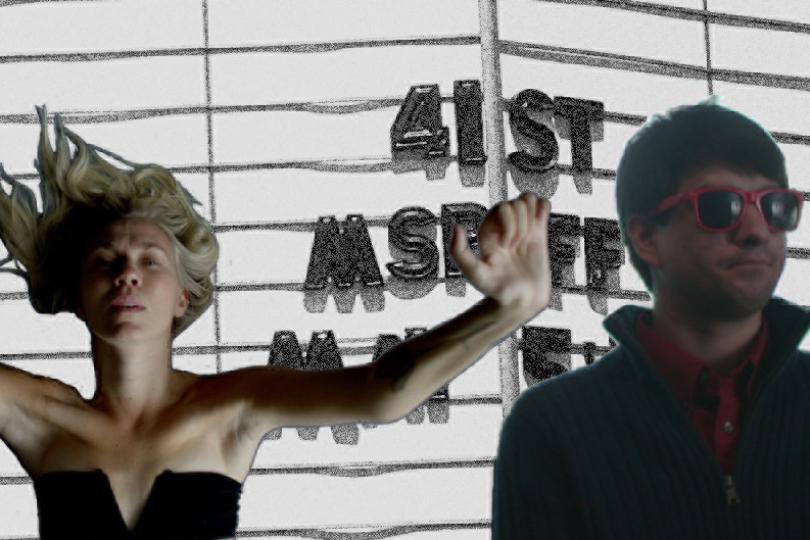Something old, something new

“Familiar.” That was the word Francisca Alegria, the Chilean writer-director of The Cow Who Sang a Song Into the Future, used when describing to me her initial impressions of Minnesota. The drive from MSP International Airport into Minneapolis, where her feature debut screened at the 41st edition of the International Film Festival, reminded her of the geographic transitions between rural and urban areas within her home country. I partially understood what she meant; returning to the MSP Film Society’s first in-person festival after two years of a global pandemic which shuttered businesses and precipitated social unrest, I was relieved to find some semblance of familiarity in the faces and places that came flooding back, even as they visibly differed from when I last saw them. Yet change is not inherently something to be feared, and the promise heralded by a new chapter for the Film Society yielded a curious blend of nostalgic comfort and cautious optimism for the future of the filmmaking community here in the Twin Cities.
The comingling of past and future was a prevalent feature of the festival’s diamond anniversary held in the newly renovated St. Anthony Main, rechristened “The Main” and now completely run by the Film Society. On a local level, a revived interest in Film in the Cities (or FITC) highlights the irrepressible creativity within the metro area. Daniel Bergin and Miranda Harincar’s documentary pays affectionate tribute to the revered filmmaking collective which housed workshops and initiatives for young filmmakers, its most beguiling passages comprising of the films produced under the umbrella of the nonprofit organization. The roots in midcentury avant-garde filmmaking evident in the works produced by FITC reinforce the union between formal experimentation and unfettered creativity, which contemporaneously acts as a ballast against an increasingly homogenized output of mass media defined by a deluge of big-budget IP.
FITC closed its doors in 1993, due both to lack of leadership as well as economic constraints of the arts sector consolidated during the Reagan-Bush I dynasty. Nearly thirty years later, the need for radical artmaking seems even more pressing. Two documentary shorts sought to broach this issue: Sign o’ the Times, a documentary short on the graffiti murals painted on storefronts following George Floyd’s murder directed by regular MN Playlist contributor Tylie Shider, and Art From the Inside, Barbara Wiener’s portrait of prisoners whose vivid paintings emerged outside of the Stillwater Correctional Facility. Both films tiptoe around the question of art’s efficacy in dismantling both systemic racism and putative conceptions of justice, yet their flashes of insight are dimmed by the scope of their directors. Shider’s foregrounding of himself within the frame sometimes distracts from prescient observations about art that serves the function of performative wokeness. Wiener’s sympathetic regard for her subjects extends only as far as her willingness to question the work they produce are symptomatic of an intrinsic grace or of the rehabilitative success the eponymous program yields within the prison-industrial complex.
Faring better was Move Me, a nuanced and candid study of loss mediated through artistic expression. Kelsey Peterson, a dancer left paralyzed by an accident in July 2012, co-directed this autobiographical chronicle of her attempts to regain the creative and personal verve of her past life. New and archival footage of Peterson and her family are gracefully intertwined, gradually accumulating new layers of emotional complexity as the film progresses to a re-enactment of her performance ‘A Cripple’s Dance’, staged at the Southern Theater in Minneapolis. Through ruminations and conversations on accessibility, hope, and sexual autonomy, Peterson deflects any impulse toward parochial self-aggrandizement, aestheticizing her body in carefully composed close-ups while candidly humanizing her pain.
Watching Peterson’s and Daniel Klein’s moving film, I was reminded of another emotionally ravaging meditation on art and trauma: Terence Davies’ Benediction, a rapturously devastating biopic about soldier and poet Siegfried Sassoon who was a conscientious objector during the First World War. Either obliquely or explicitly, several of the international titles showcased in the festival served as totemic prisms of urgently relevant issues. From the brutal specter of warfare in Ukraine depicted in Klondike to the draconian anti-abortion measures in the 1960s France of Happening, the existential and visceral danger of becoming untethered from a shared societal conception of equity and peace permeated these often-despairing films.
When it comes to using film art to actively dispel regressive, if not outright dangerous, preconceptions of our eclectic humanity, the Film Society seems undaunted by the task. “I prefer to think of the titles we program as “challenging” rather than “controversial”,” Becca Mayo, Marketing and Outreach Associate told me. “I think that goes back to our mission of working to transform and unite our communities—these different topics, ideas, and perspectives need to be shown and talked about to work towards our goal.” Jesse Bishop, the Programming Director for the Film Society since 2016, echoes these sentiments in his own philosophy toward framing the festival. “We feel like the work largely speaks for itself. These are expressions of ideas, and we’re a marketplace of visualizations of those ideas.”
Over the course of two weeks, these “visualizations” have been enhanced by accompanying panels (less than years past due to the pandemic) which hosted filmmakers seeking a platform for their personal art. Both Navajo playwright and actor Rhiana Yazzie and Sisseton Wahpeton Dakota and Navajo Dine filmmaker Leya Hale took part in a panel where they elucidated the challenges in bringing stories by and about indigenous women to the screen. Through fiction (Yazzie’s A Winter Love) and documentary filmmaking (Hale’s Bring Her Home), their work complicates what Yazzie referred to as longstanding images “created by non-native minds”, rooted in “bias and colonialism.” The multiplicity in their respective approaches, from the gently bittersweet to the socio-politically perceptive, reveal a diversity in form reflective of their shared, unwavering activism.
It is precisely as a forum for creative and intellectual fluidity, mindfully curated alongside auteurist and mainstream indies, that the Film Society contains its fullest potential as a hub for revived artistry here in the Twin Cities. In such volatile times, it would be a fool’s errand to predict whether that potential can or will be fulfilled. But in this moment, at least, they’ve given cinephiles and filmmakers alike a space to dream, where a little flash of the old can be glimpsed in the foundation of something new.




